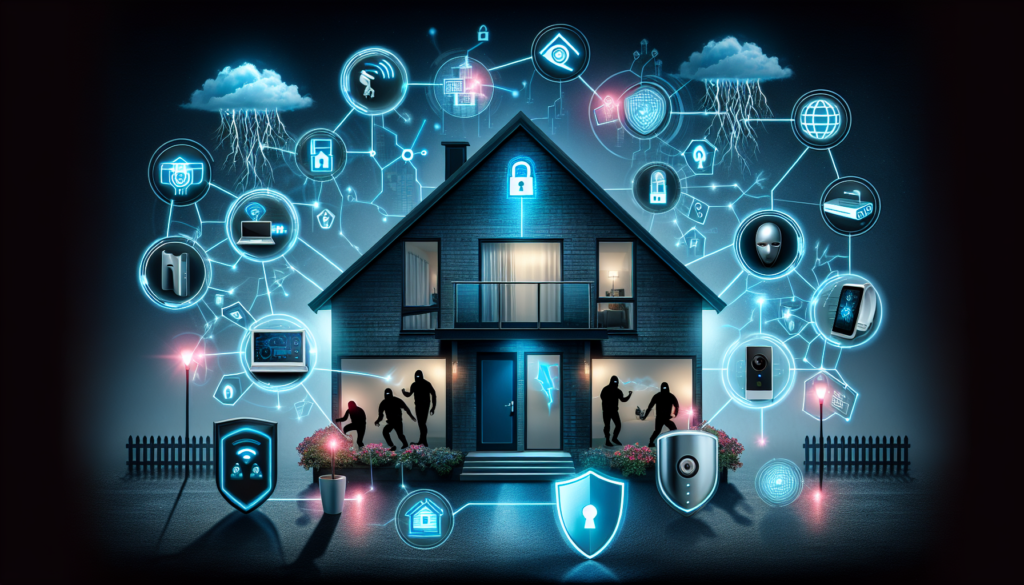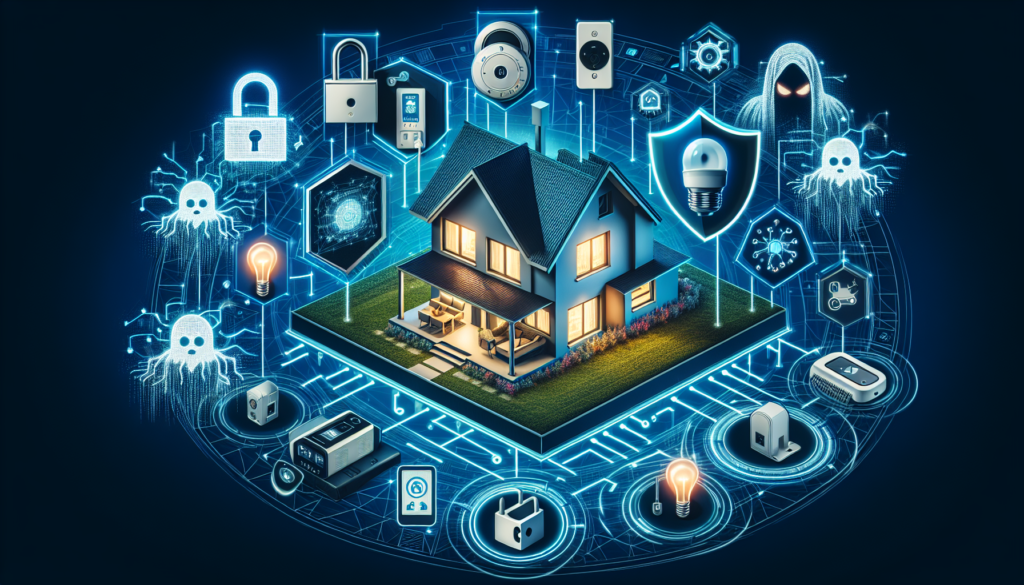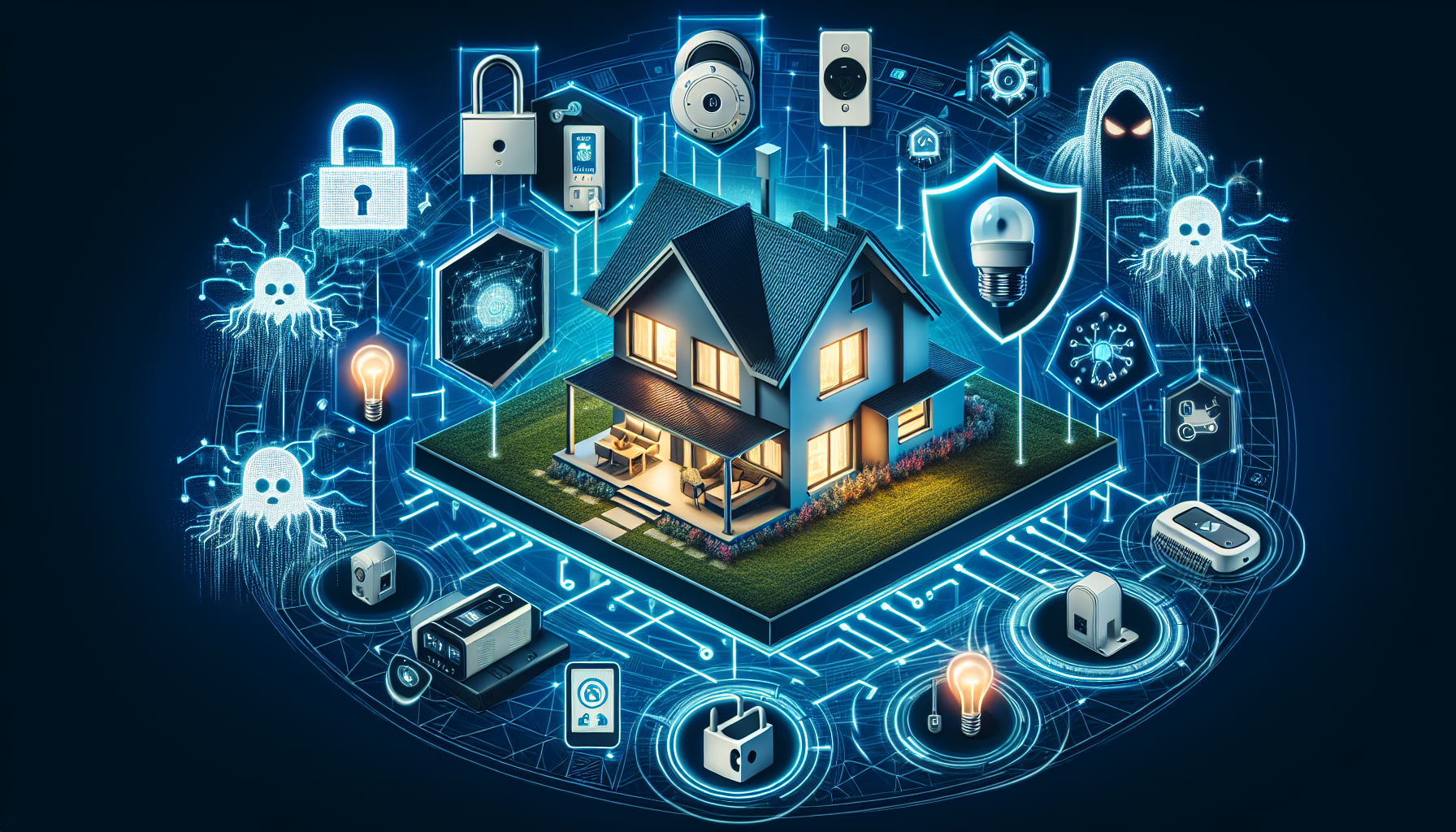In today’s world of smart devices and interconnected homes, privacy and security have become hot topics of discussion. With an increasing number of devices being connected to the internet, there are growing concerns about the potential risks and vulnerabilities that come with this level of connectivity. This article explores the importance of maintaining privacy and security in a connected home, and provides valuable insights and practical tips to help you protect your personal information and ensure a safe and secure digital environment for you and your family. In today’s digital age, where connected homes are becoming increasingly popular, ensuring the privacy and security of your network is of utmost importance. With numerous devices connected to your home network, such as smart TVs, cameras, and voice assistants, it is crucial to take steps to protect your personal information from potential threats. In this article, we will discuss various measures you can implement to secure your connected home and keep your data safe.

Securing the Network
The first step towards ensuring the privacy and security of your connected home is to secure your network. One of the most effective ways to achieve this is by changing the default administrator username and password of your home router. Leaving the default credentials unchanged makes it easier for hackers to gain unauthorized access to your network. By setting a strong and unique password, you significantly reduce the risk of unauthorized access.
Additionally, it is advisable to enable Wi-Fi Protected Access 2 (WPA2) encryption on your home network. WPA2 provides a higher level of security compared to its predecessor, WEP, which is vulnerable to attacks. By enabling WPA2 encryption, you create a secure communication channel between your devices and your home network, minimizing the risk of eavesdropping and unauthorized access.
Strong Passwords and Authentication
Another important aspect of securing your connected home is using strong passwords and authentication methods. It is vital to create unique and complex passwords for all your devices and online accounts. Avoid using common passwords, such as “password123,” as they are easily guessable. Instead, opt for a combination of letters, numbers, and special characters.
Furthermore, consider implementing two-factor authentication (2FA) whenever possible. 2FA adds an extra layer of security by requiring you to verify your identity through another factor, such as a fingerprint scan or a unique code sent to your mobile device, in addition to entering your password. This additional step makes it significantly more difficult for attackers to gain unauthorized access to your accounts.
Multifactor Authentication
While two-factor authentication provides an added layer of security, implementing multifactor authentication (MFA) takes it a step further. MFA involves using multiple authentication factors, such as something you know (password), something you have (mobile device), and something you are (biometric data), to verify your identity. This multi-layered approach makes it even more challenging for attackers to bypass your security measures, ensuring the privacy and security of your connected home.
Encryption
In addition to securing your network, encrypting your data is crucial to protect your privacy. Encryption scrambles your data in a way that it can only be deciphered with the appropriate encryption key. By encrypting your sensitive information, you ensure that even if it is intercepted by an unauthorized party, they will not be able to decipher it without the encryption key.
There are various encryption protocols available, such as Secure Sockets Layer (SSL) and Transport Layer Security (TLS), which are commonly used to secure data transmitted over the internet. Implementing encryption protocols on your devices and network ensures that your data remains private and protected from potential eavesdroppers.

Firewalls and Intrusion Detection Systems
Firewalls and intrusion detection systems (IDS) play a crucial role in protecting your connected home from unauthorized access and potential cyber-attacks. A firewall acts as a barrier between your home network and the outside world, monitoring and controlling incoming and outgoing network traffic. It helps prevent unauthorized access to your network and filters out potentially malicious data.
An intrusion detection system, on the other hand, monitors network traffic and detects any suspicious or unauthorized activity. It alerts you to potential security threats, allowing you to take appropriate action. By implementing both a firewall and an intrusion detection system, you add an extra layer of protection to your connected home, safeguarding your network from potential threats.
Securing IoT Devices
With the increasing availability of Internet of Things (IoT) devices, it is important to understand the security risks associated with them. IoT devices, such as smart thermostats, cameras, and voice assistants, are often connected to your home network and can potentially become entry points for hackers.
To secure your IoT devices, it is crucial to follow the manufacturer’s instructions for setting up and securing the devices. Change default usernames and passwords, keep the devices’ firmware up to date, and regularly check for security patches and updates. It is also recommended to disable any unnecessary features or services that may pose a security risk.
Regular Updates and Patches
Keeping all your devices up to date with the latest firmware, software, and security patches is essential in maintaining the privacy and security of your connected home. Manufacturers often release updates to address security vulnerabilities and improve the overall performance and functionality of their devices.
Regularly check for updates on your devices, including your home router, smart devices, and mobile applications. Enable automatic updates whenever possible to ensure that you are always running the latest, most secure versions. By staying up to date, you stay one step ahead of potential attackers and minimize the risk of security breaches.
Monitoring and Logging
Monitoring and logging activities on your network can help identify and mitigate security incidents. By implementing network monitoring tools and logging mechanisms, you can keep track of network traffic, identify potential anomalies or suspicious activities, and take prompt action to address any security threats.
Consider installing security software that provides real-time monitoring and alerts for any unusual network behavior. Keep a log of network activities, including login attempts, device connections, and data transfers, as this information can be invaluable in investigating and resolving security incidents.
Physical Security Measures
While securing your network and devices is crucial, physical security measures should not be overlooked. Physical access to your connected home can pose a significant risk to your privacy and security. Be mindful of who has access to your home and take necessary precautions to protect your devices and network infrastructure.
Consider placing your home router in a secure location, such as a locked cabinet, to prevent unauthorized access. Additionally, ensure that physical devices, such as cameras or smart locks, are securely installed and cannot be tampered with easily. By combining both digital and physical security measures, you create a comprehensive defense strategy for your connected home.
Educating Users and Establishing Policies
Lastly, educating all users of your connected home, including family members and guests, about the importance of privacy and security is vital. Establish clear policies regarding the use of devices and network resources, such as guidelines for creating strong passwords, restrictions on downloading apps from untrusted sources, and rules for sharing personal information.
Regularly communicate and reinforce these policies to ensure that everyone is aware of their responsibilities in maintaining the privacy and security of your connected home. By promoting a culture of vigilance and awareness, you create a strong defense against potential threats.
In conclusion, securing your connected home is a multi-faceted endeavor that requires a combination of technical measures, user awareness, and vigilance. By implementing the strategies discussed in this article, such as securing your network, using strong passwords and authentication methods, encrypting your data, and regularly updating your devices, you can establish a robust security framework for your connected home. Remember, the privacy and security of your personal information and network should always be a top priority.

